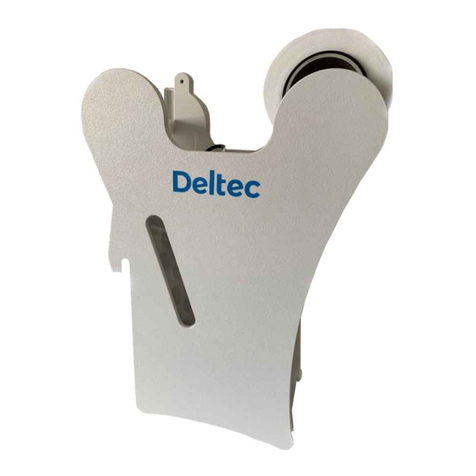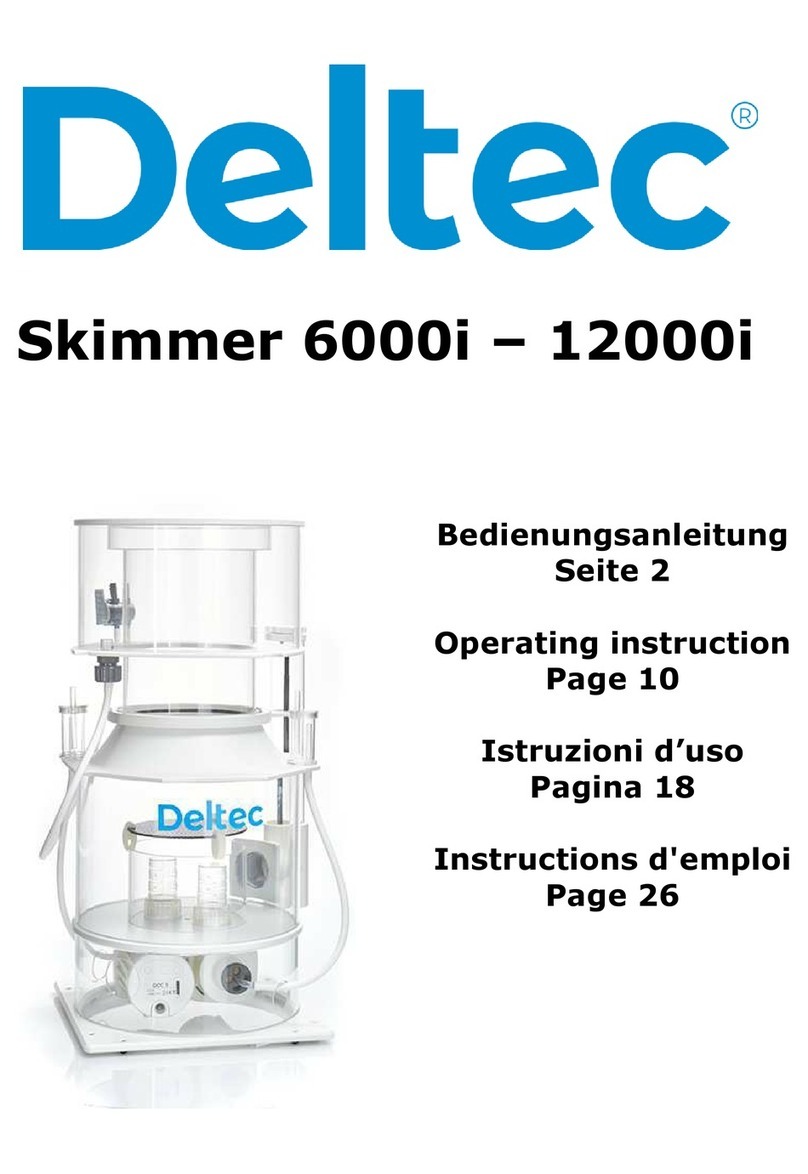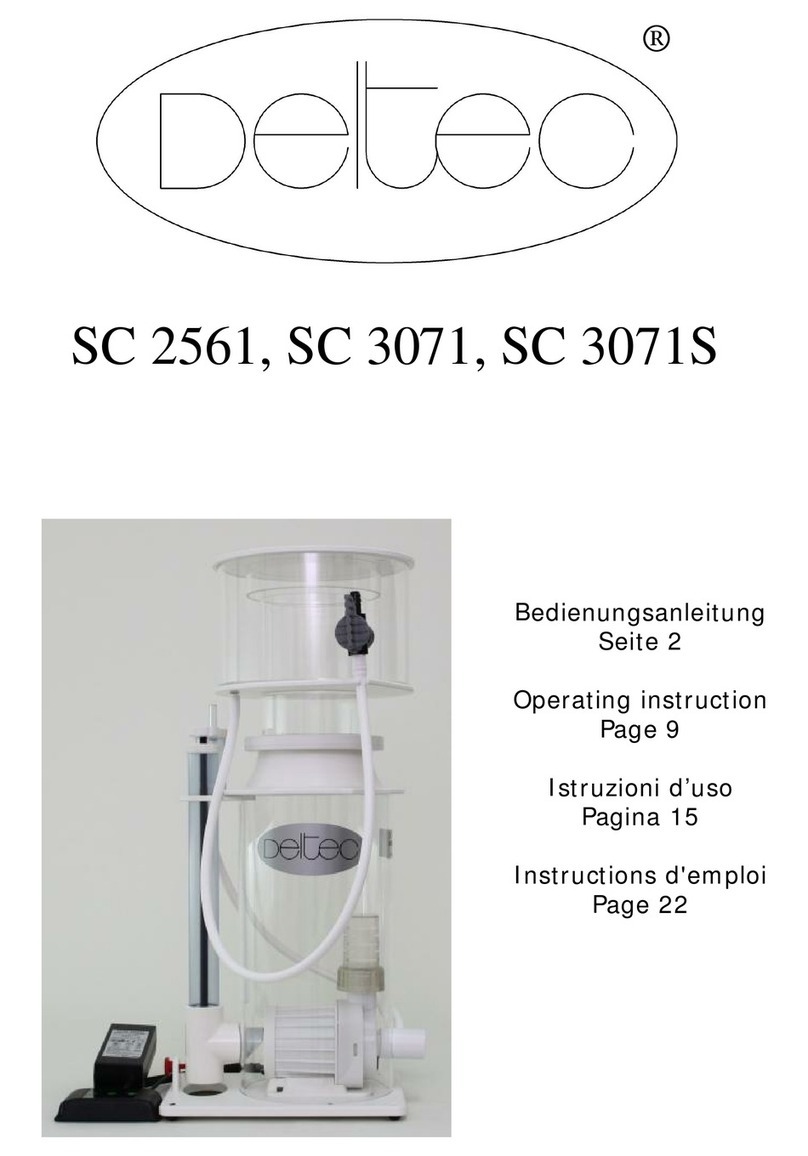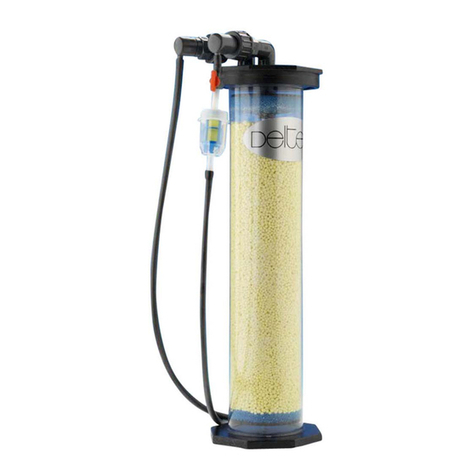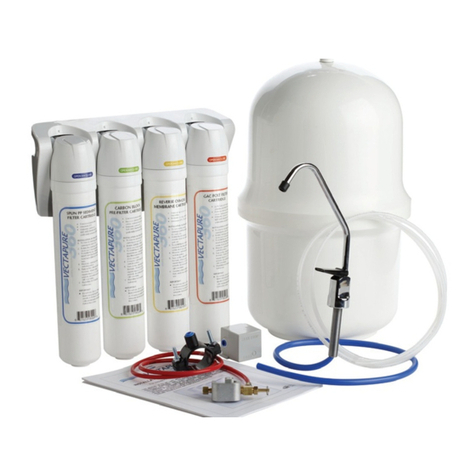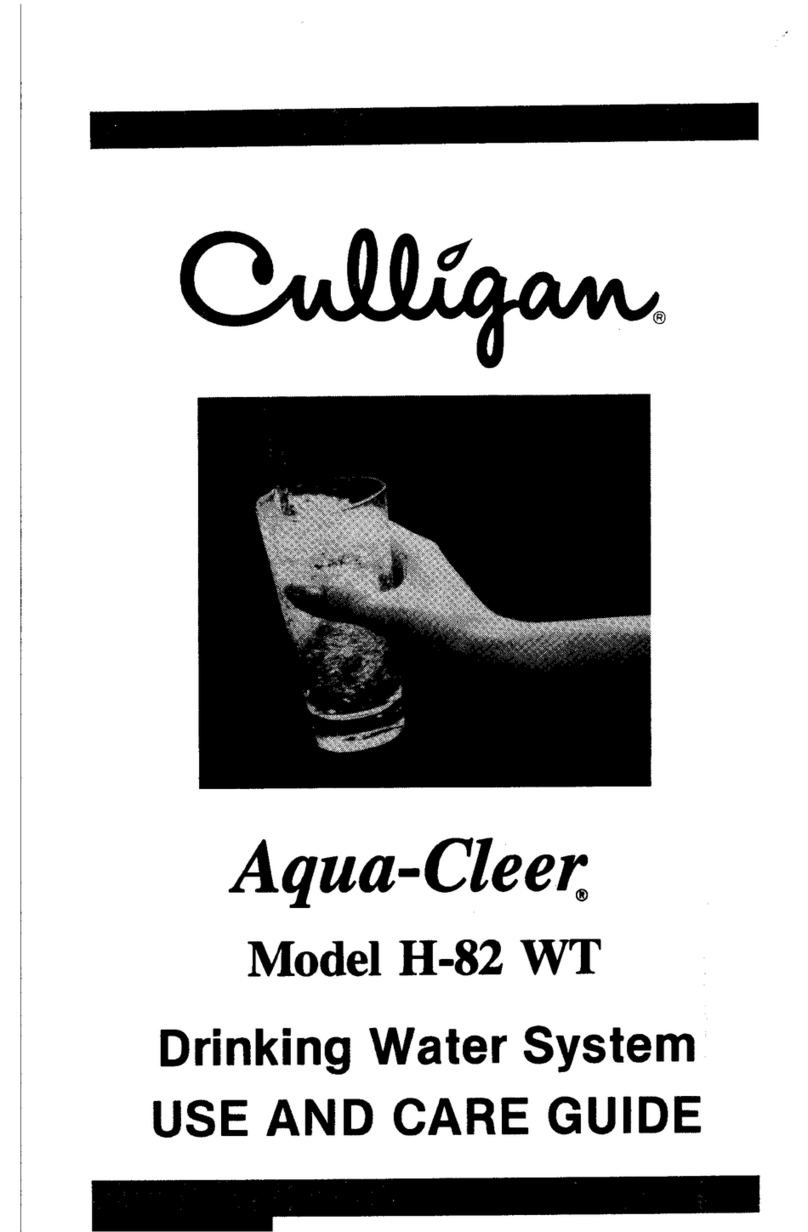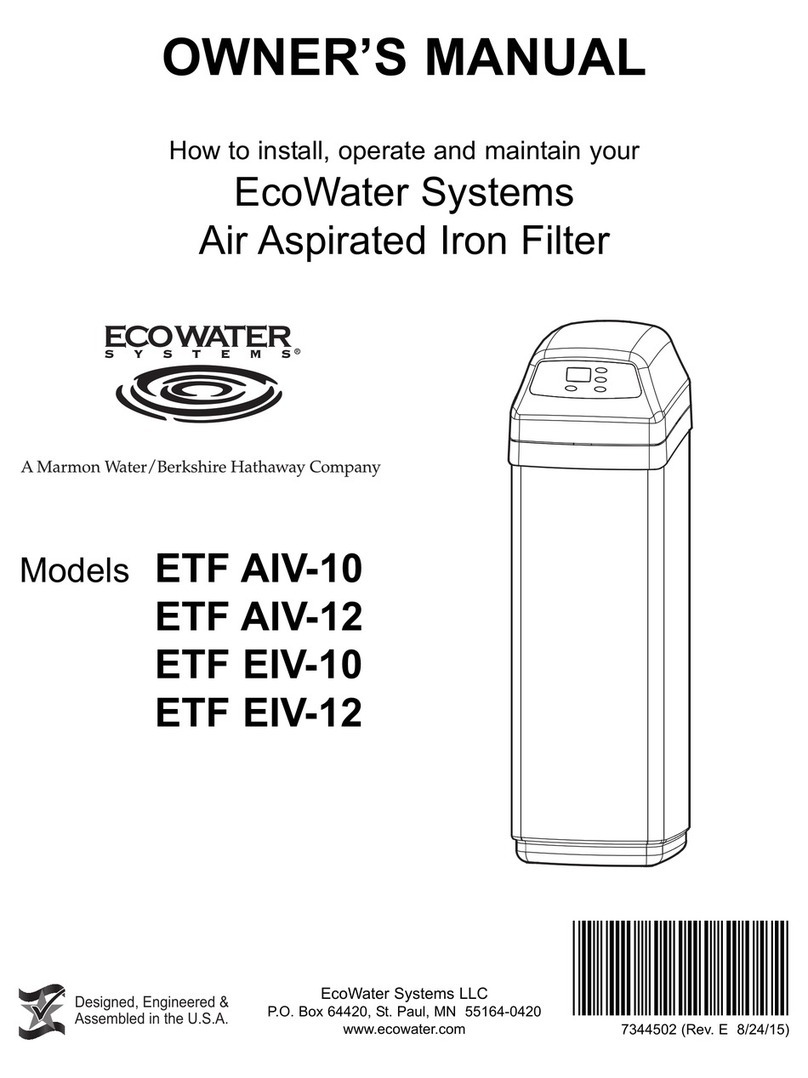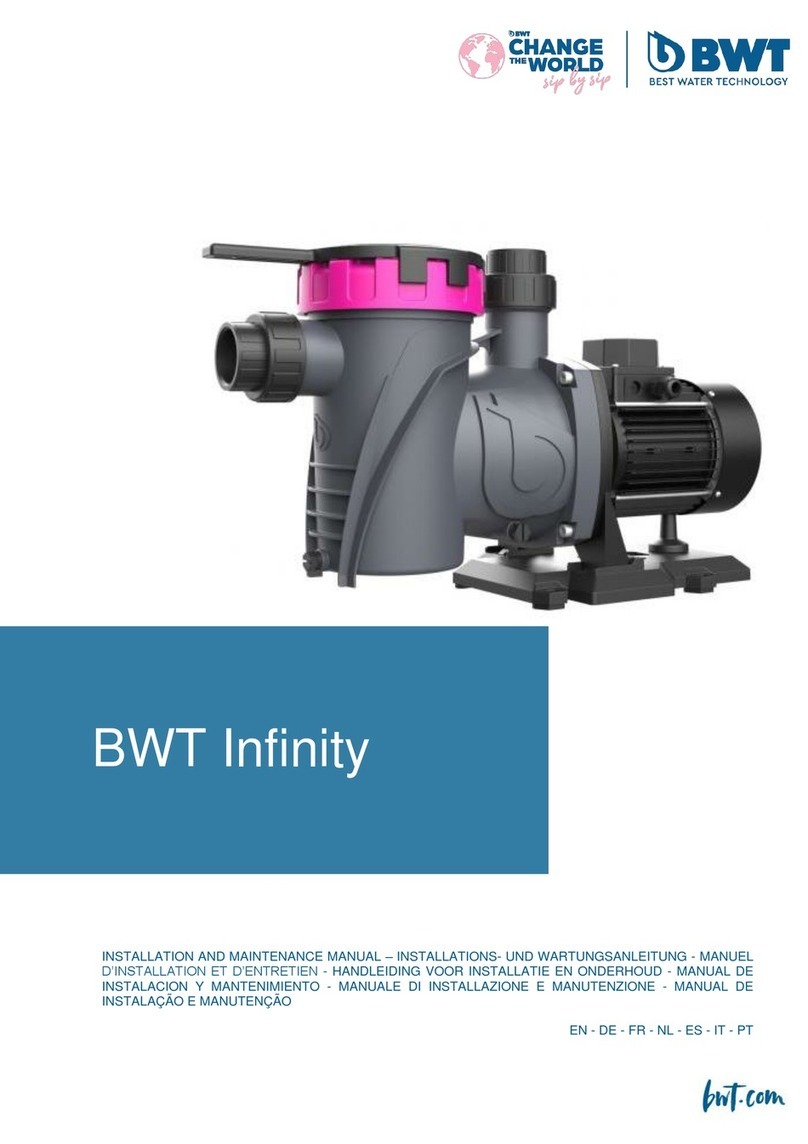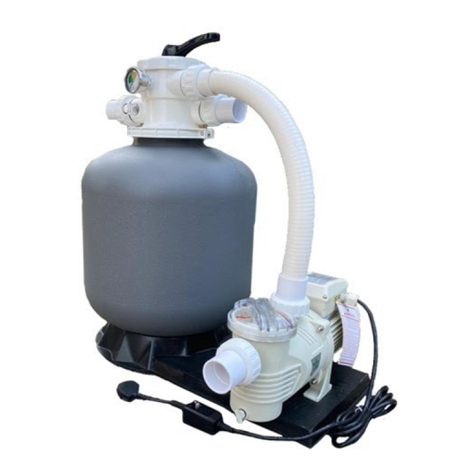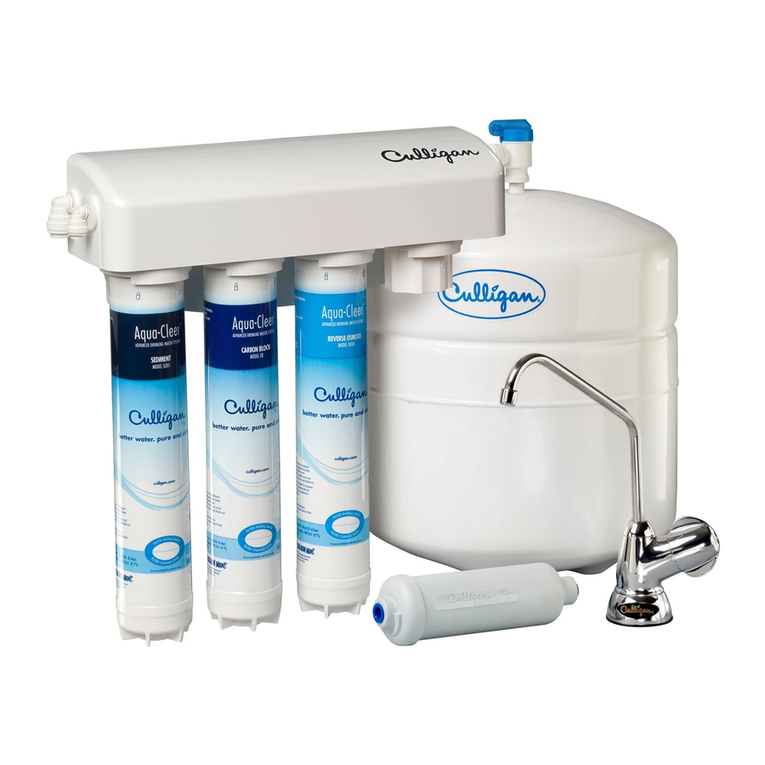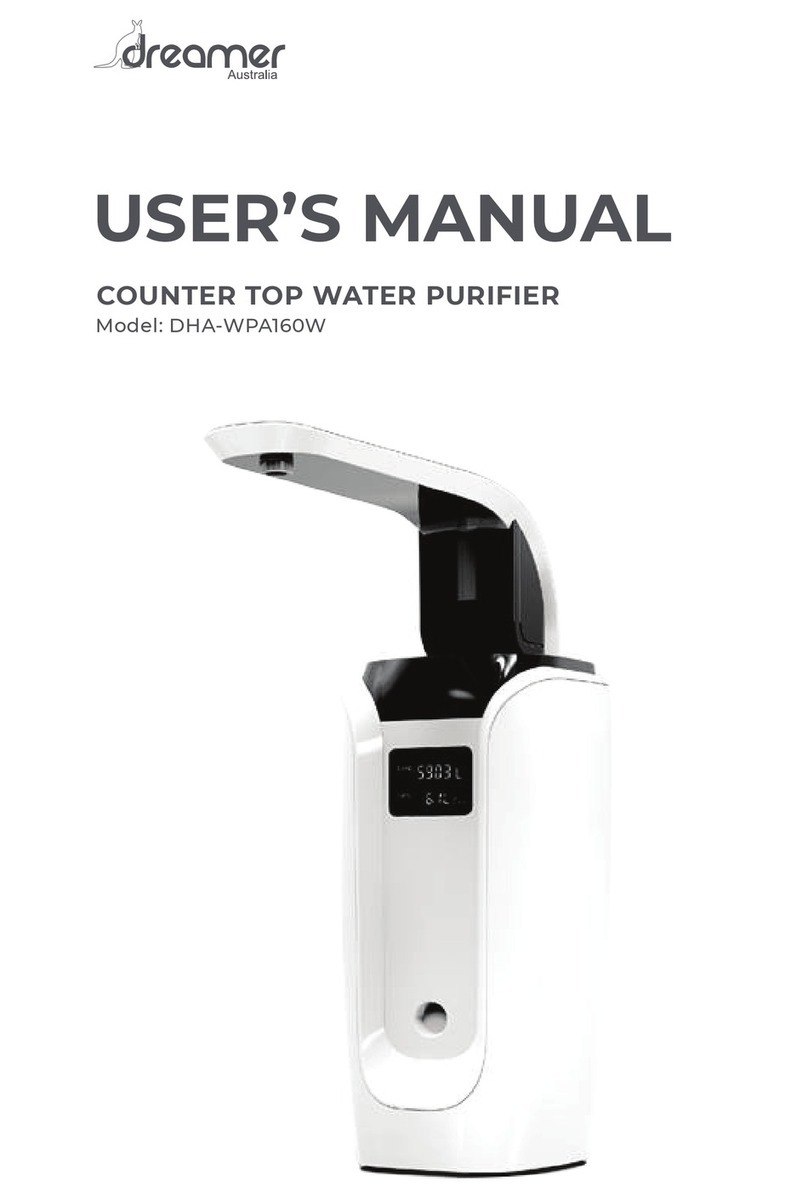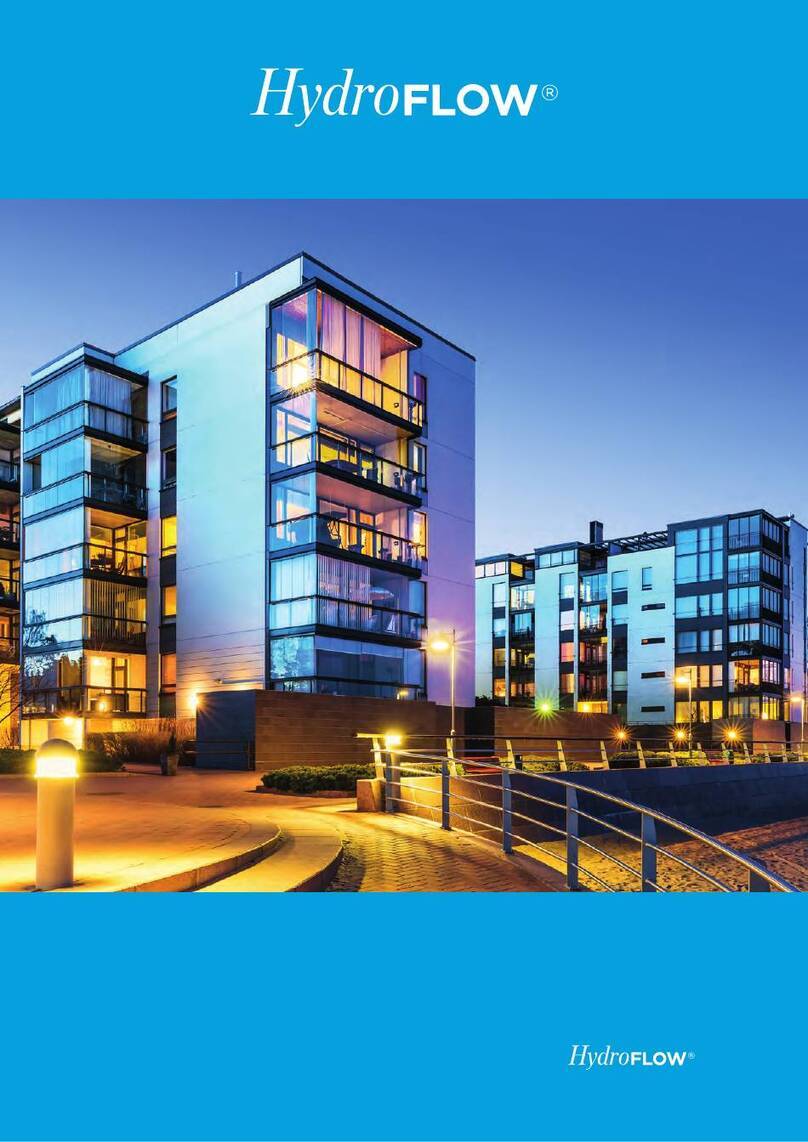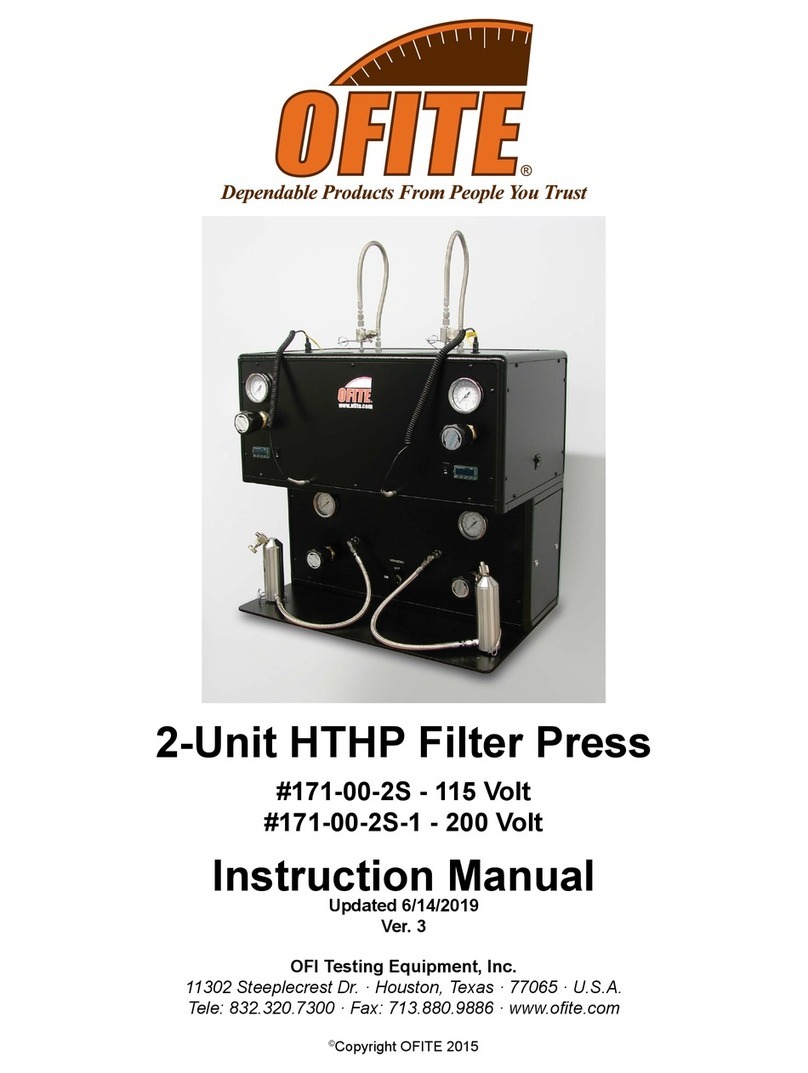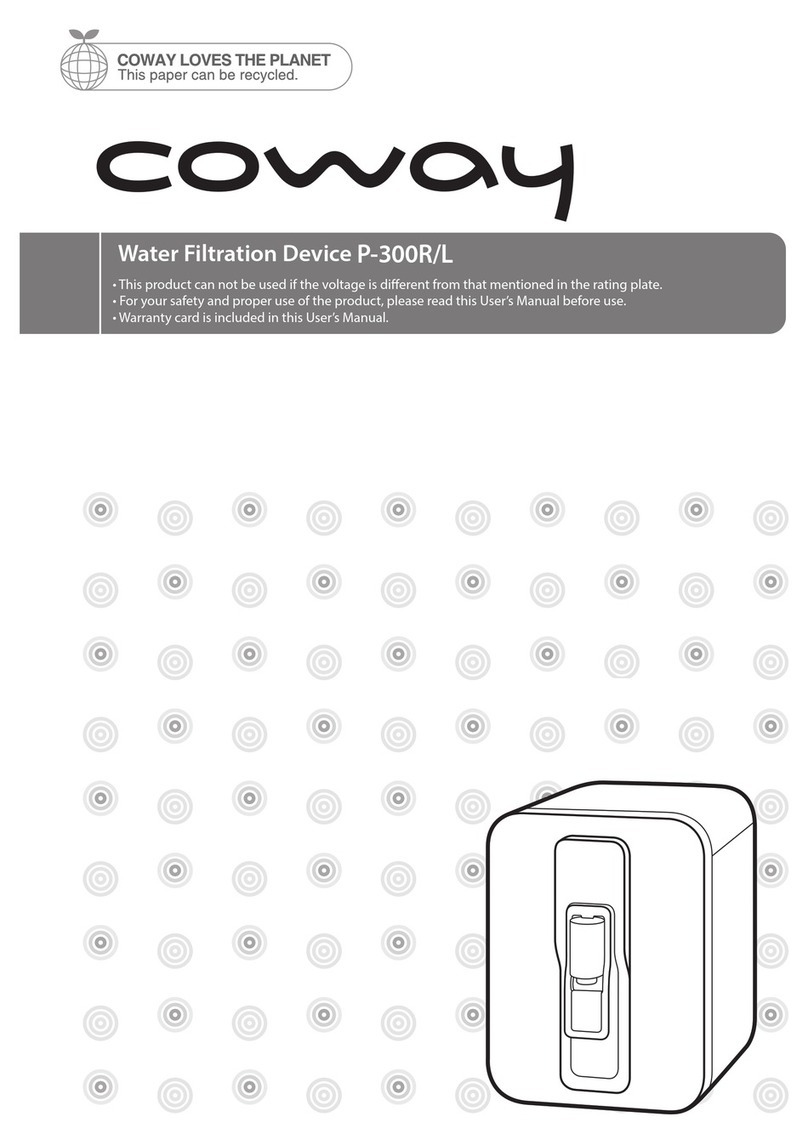Deltec SC 1350 User manual

®
SC 1350
Bedienungsanleitung &
Ersatzteilliste
Operating instruction &
spare part list
Istruzioni d’uso e
parti di ricambio
Instructions d'emploi
Accessoires et pièces
détachées

Wichtige Sicherheitshinweise
Warnung: Zum Schutz vor Verletzungen sollten grundlegende Vorsichtsmaßnahmen und folgende
Sicherheitshinweise beachtet werden.
1) Sicherheitshinweise Lesen und befolgen
) Gefahr: Zur Vermeidung eines elektrischen Schlages sollten alle Aquarium Geräte mit Vorsicht
gehandhabt werden. In keinem der unten aufgeführten Fälle sollte die Reparatur vom Kunden
versucht werden. Das Gerät muss zu einem autorisierten Kundendienst gebracht werden.
a. Ein Gerät mit beschädigtem Kabel oder Stecker darf nicht in Betrieb genommen werden. Das
gleiche gilt, wenn das Gerät nicht richtig funktioniert, fallen gelassen oder anderweitig
beschädigt wurde.
b. Um ein Nasswerden des Gerätesteckers oder der Steckdose zu vermeiden, sollten der
Aquarium Unterschrank und das Becken seitlich von der Wandsteckdose aufgestellt werden.
Somit können keine Tropfen auf den Stecker oder die Steckdose fallen. Eine „Tropfenschleife“
sollte in jedem Kabel zwischen Aquarium und Steckdose vorgesehen werden. Die
„Tropfenschleife“ ist der Teil des Kabels, der unter der Steckdose durchhängt (Skizze 1). Auf
diese Weise tropft das Wasser unter der Steckdose vom Kabel ab und kann nicht mit dieser in
Berührung kommen. Wenn der Stecker oder die Steckdose nass wird, NICHT das Kabel
herausziehen, sondern die Stromversorgung an der Sicherung bzw. am Leistungsschalter
trennen. Dann erst den Stecker herausziehen und prüfen, ob sich Wasser in der Steckdose
befindet.
3) Kinder müssen beaufsichtigt werden, wenn Sie sich am Aquarium oder in dessen Nähe
Aufhalten.
4) Bei Nichtverwendung, vor dem Montieren/Demontieren von Teilen oder vor dem Reinigen
müssen die betroffenen Geräte stets ausgesteckt werden. Nicht am Kabel ziehen. Zum
Herausziehen des Kabels immer den Stecker greifen.
5) Die Geräte dürfen nur für den vorgesehenen Zweck verwendet werden. Die Verwendung von
Zubehör, das vom Hersteller nicht empfohlen oder verkauft wird, kann gefährliche
Bedingungen verursachen.
6) Das Gerät nicht an einer Stelle installieren oder lagern, wo es der Witterung oder
Temperaturen unter null Grad ausgesetzt ist.
7)
Das Gerät ist mit einem Schukostecker ausgestattet. Dieser Stecker darf auf keine Weise
verändert oder umgangen werden.
Wird der Stecker entfernt erlischt jeder Garantieanspruch!
Diese Anleitung aufbewahren
- -

Innenabschäumer SC 1350
Der Deltec Innenabschäumer ist für den Einsatz in Filterwannen vorgesehen.
Er zeichnet sich aus durch:
-Präzisions- Wasserstandsregler
-Schalldämpfer
-Großen Schaumbecher
-Hohe Leistung
-Extrem niedriger Energieverbrauch
-Leisen Betrieb
Einbau
Der Wasserstand in der Filterwanne sollte zwischen 150 - 50 mm sein. Die Vorraussetzung
für einen einwandfreien und zuverlässigen Betrieb ist ein konstanter Wasserstand in der
Filterwanne (Zeichnung a). Dadurch, dass die Abschäumerpumpe Wasser aus der
Filterwanne mit einem bestimmten Niveau gegen die Wassersäule im Abschäumer pumpen
muss, ändern sich die Pumpenwerte wie Luftleistung, Stromaufnahme, Durchflussmenge
bei unterschiedlichen Wasserständen. Um jederzeit einen konstanten Wasserstand in der
Filterwanne zu garantieren, wird empfohlen, ein Nachfüllsystem wie den Deltec Aquastat
1001 oder ähnliches zu verwenden. Eine andere Möglichkeit ist der Einbau einer
Abschäumerkammer (Zeichnung b) in die Filterwanne, die einen höheren Wasserstandstand
als die Filterwanne haben muss. Vom Aquairumüberlauf oder der Hauptpumpe kann diese
Abschäumerkammer über einen Bypass mit Wasser versorgt werden. Die Höhe der
Abschäumerkammer sollte zwischen 150 und 50 mm sein.
-3-

Inbetriebnahme
Nach dem Einbau sollte der Abschäumer wie folgt in Betreib genommen werden:
-Niveauregler durch Drehen im Uhrzeigersinn ganz öffnen.
-Wasserzufuhr für die Abschäumerkammer einschalten (falls vorhanden).
-Niveauregler langsam schließen bis Schaum im unteren Bereich des Schaumtopfrohres
sichtbar ist (Zeichnung c).
-Um ein anfängliches Überschäumen zu vermeiden, die Schaumsäule mittels des
Niveaureglers zunächst eher niedriger einstellen
-Die Schaumbildung nach der Inbetriebnahme beobachten und eventuell mit dem
Niveauregler korrigieren.
Eine endgültige Feineinstellung kann frühestens nach 4 Stunden vorgenommen werden.
Dazu wird mit dem Niveauregler das Schaumbild im Steigrohr so eingestellt, dass die feinen
Luftblasen leicht über dem Schaumtopfboden anfangen zu größeren Blasen zu zerplatzen
(Zeichnung d).
-Für nassen Schaum (helle Flüssigkeit im Schaumtopf) den Niveauregler gegen den
Uhrzeigersinn drehen.
-
Für trockenen Schaum (dunkle Flüssigkeit im Schaumtopf) den Niveauregler im
Uhrzeigersinn drehen.
Wichtig: Die Pumpe niemals trocken laufen lassen.
-4-

d) Schaumtopf mit Übergangsrohr
Betrieb mit Ozon
Ozon ist ein extrem aggressives Gas, bei unsachgemäßem Gebrauch kann es zu
gesundheitlichen Beeinträchtigungen kommen, deshalb darf Ozon niemals direkt einatmet
werden. Zudem kann Ozon, bei zu hoher Dosierung, zu Schäden am Abschäumer führen.
Die Ozon Dosierung ist so einzustellen, dass kein freies Ozon am Deckel des Abschäumers
wahrzunehmen ist. Die Deltec Abschäumer können mit max. 50 mg/Stunde Ozon pro
Pumpe betrieben werden. Dazu wird in den Luftschlauch oberhalb der der
Abschäumerpumpe ein ozonfestes T-Stück gesetzt. Das freie Ende des T-Stücks wird mit
einem ozonfesten Schlauch mit dem Ozongerät verbunden. Über einen Lufthahn zwischen
T-Stück und Schalldämpfer die Luft soweit drosseln, bis Luft selbstständig durch das
Ozongerät angesaugt wird.
Sicherheitshinweise:
-Die maximale Ozonmenge von 50mg/Stunde pro Pumpe darf nicht überschritten
werden.
-Durch Staubablagerungen im Ozongerät kann sich der Luftdurchlass verringern. Das
kann zu einer Erhöhung des Wasserstandes im Abschäumer führen wodurch dieser im
Extremfall überlaufen kann. Um dies zu vermeiden ist das Ozongerät regelmäßig auf
Ablagerungen zu kontrollieren und ggf. zu reinigen.
-Niemals freies Ozon einatmen.
-Das Ozongerät darf nicht direkt an den Lufthahn bzw. den Schalldämpfer
angeschlossen werden.
-Zur Vermeidung von Wasserschäden muss das Ozongerät so hoch aufstellt werden,
dass beim Abstellen der Abschäumerpumpe kein Wasser in das Gerät eindringen kann
risches Meerwasser
Durch bestimmte Zusätze in vielen Meersalzen erzeugt der Abschäumer extrem feine
Luftblasen, die nicht zurückgehalten werden können, gleichzeitig wird sehr wässeriger
-5-

Schaum erzeugt. Durch häufiges Entleeren des Schaumtopfes, können die besagten
Inhaltsstoffe im Aquariumwasser reduziert werden. Außerdem kann durch vorübergehendes
stärkeres Füttern die extreme Feinblasenbildung vermindert werden.
Technische Daten
Maße
mm
Aquariengröße
Liter
Wasserstand
mm
Technische
Daten
SC Serie Stellfläche
Höhe
Hoher
Besat
Normaler
Besat min. max.
Stromauf
nahme
Watt
Luft
Liter/Std.
SC 1350 160x180 500 300 500 150 250 9 450
ehlersuche
Symptom Ursache Maßnahme
Luftzuleitung zur Pumpe verstopft reinigen
Ozongerät verschmutzt reinigen
Luftschlauch abgeknickt Schlauchführung ändern
Luftansaugdüse verstopft reinigen
Pumpe läuft, jedoch
keine oder zu
geringe Luftmenge
Schmutz im Laufrad reinigen
Kommt bei bestimmten Seesalzen
und bei Zugabe von Wasser-
aufbereitungsmitteln vor
Andere Salze verwenden, mehr
füttern
Starke Luftperlung
im Ablaufwasser Bei sehr starker Wasser-Belastung
nach Neueinrichtung mit lebenden
Steinen
Luftmenge stark drosseln
Wird die Pumpe (nach
Inbetriebnahme) trocken gelagert,
kann das Lager in der vorderen
Lagerplatte eintrocknen.
Laufeinheit wie nachstehend
illustriert ausbauen und in
Leitungswasser durch axiale und
radiale Bewegungen lösen
Pumpe läuft nicht an
Laufeinheit falsch montiert Siehe Ein- Ausbau der Laufeinheit
Demontage der Pumpe: siehe Seite 27
Wartung
Bei korrektem Einbau und Einstellung benötigen Deltec Abschäumer denkbar wenig
Wartung. Durch Kalkwassermischer und Kalkreaktoren kann es jedoch zu Kalkablagerungen
in der Pumpe kommen, die zu Funktionsstörungen führen können.
Es wird empfohlen bei Störungen oder alle 6 Monate den Rotor sowie die Strömungsklappe
auf Leichtgängigkeit und die Lufteinzugsdüse auf freien Durchgang hin zu prüfen. Durch
eintauchen der Teile in einen handelsüblichen Entkalker lösen sich die Kalkablagerungen.
Ein frühzeitiges Verstopfen der Lufteinzugsdüse durch Luftstaub und Salzkristalle kann
durch ca. 15-30 minütiges Abstellen der Pumpe 1 mal pro Woche vermieden werden.
Zu beachten: Um einen störungsfreien Betrieb zu gewährleisten, ist es wichtig den
Niveauregler in regelmäßigen Abständen (min. einmal wöchentlich) auf Verunreinigungen zu
kontrollieren und gegebenenfalls zu reinigen. Nach wiedereinsetzen des Niveaureglers ist
der Wasserstand im Abschäumer zu kontrollieren und ggf. neu einzustellen.
Verunreinigungen und Ablagerungen können zur Erhöhung des Wasserstandes bis hin zum
Überlaufen des Abschäumers führen.
-6-

Ersatzteilliste SC 1350
Number Art. No. Description Number Art. No. Description
81130000 SC 1350 8 81140400 Pumpengehäuse DCS 400
A 28017000
Pumpe komplett 9 26017000 Stator DCS 400
1 81130100 Körper mit Wasserstandsregler 10 27017000 Laufeinheit DCS 400
2 88020200 Schaumtopf 11 81140500 Wasserstandsregler Teil 1
3 80500075 O-Ring Schaumtopf 12 81140600 Wasserstandsregler Teil 2
4 81140300 Deckel Schaumtopf 13 25094000 Silikon Fuß
5 64059000 Schalldämpfer 14 12359000 Rändelschraube
6 61758000 Silikonschlauch weiß 5/8
7 81130700 Lufteinzugsdüse SC1350
-7-

IMPORTNT SA ETY INSTRUCTIONS
WARNING To guard against injury, basic safety precautions should be observed, including the
following.
1)
READ AND FOLLOW ALL SAFETY INSTRUCTIONS.
)
DANGER – To avoid possible electric shock, special care should be taken since water is
employed in the use of aquarium equipment. For each of the following situations, do not
attempt repairs by yourself; return the appliance to an authorized service facility for service
or discard the appliance.
a)
Do not operate any appliance if it has a damaged cord or plug, or if it is malfunctioning or
has been dropped or damaged in any manner.
b)
To avoid the possibility of the appliance plug or receptacle getting wet, position aquarium
stand and tank to one side of a wall-mounted receptacle to prevent water from dripping
onto the receptacle or plug.
A “drip-loop”, shown in the figure below, should be arranged by the user for each cord
connecting an aquarium appliance to a receptacle. The “drip-loop” is that part of the cord
below the level of the receptacle, or the connector if an extension cord is used, to prevent
water travelling along the cord and coming in contact with the receptacle.
If the plug or socket does get wet, DON´T unplug the cord. Disconnect the fuse or circuit
breaker that supplies power to the appliance. Then unplug and examine for presence of
water in the receptacle.
3)
Close supervision is necessary when any appliance is used by or near children.
4)
Do not use an appliance for other than intended use. The use of attachments not
recommended or sold by the appliance manufacturer may cause an unsafe condition.
5)
Make sure an appliance mounted on a tank is securely installed before operating it.
6)
Read and observe all the important notices on the appliance.
7)
If an extension cord is necessary, a cord with a proper rating should be used. A cord rated for
less amperes or watts than the appliance rating may overheat. Care should bee taken to
arrange the cord so that it will not be tripped over or pulled.
8)
This appliance has a polarized plug (one blade is wider than the other). As safety feature, this
plug will fit in a polarized outlet only one way. If the plug does not fit, contact a qualified
electrician. Never use with an extension cord unless plug can be fully inserted. Do not attempt
to defeat this safety feature.
Exception: his instruction may be omitted for an appliance that is not provided with a
polarized attachment plug.
Removing of the plug invalidates the warranty!
SAVE THESE INSTRUCTIONS
-8-

Internal protein Skimmer SC 1350
Deltec ”SC“ series protein Skimmer are very compact, highly efficient and are fitted with a
special low energy skimmer pump.
The “SC” skimmers features
-precision water level adjuster
-silencer
-designed to operate in external filter sumps (diagram a)
-large volume Skimmer cup
-quiet operation
Installation
For best performance the water level in the filter sump should be between 150 and
50 mm. A prerequisite for continuous efficient performance is a constant water level in
which the skimmer operates. Ideally, a water level top up system should be used such as
the Deltec Aquastat 1001 or better still, a separate skimmer compartment in the sump
(diagram b). The water level in the skimmer compartment should be higher than in the rest
of the sump, but within the levels recommended for the skimmer model.
This compartment can be supplied with water from a bypass of the aquarium overflow.
-9-

Starting the skimmer
-position the skimmer in the sump
-feed water into the skimmer compartment (if applicable)
-open the water level adjuster fully by turning it clockwise
-start the skimmer pump
-turn the water level adjuster anti-clockwise until fine bubbles are visible between the
bayonet and the bottom of the skimmer cup (diagram c)
-initially keep the foam level in the skimmer cup low to avoid over skimming and
possible flooding of the cup
-wait a minimum of 4 hours before the final adjustment
-turn the water level adjuster in or out until the fine air bubbles start bursting
approximately half way up the cups riser tube
-for dry foam turn the water level adjuster clockwise
-for wet foam anti-clockwise
-Important: Never allow the pump to run dry.
-10-

Operation with ozone
Ozone is an extremely aggressive gas which - if not used properly - can damage one's
health. For this reason, ozone should never be breathed in directly.
In addition, at high doses ozone can damage the skimmer.
The dosing of ozone must be set so that no free ozone can be detected at the skimmer lid.
Deltec skimmers can be operated with 50 mg/h of ozone per pump. An ozone-resistant T-
piece should be fitted in the air hose above the skimmer pump. The free end of the T-piece
is connected to the ozonizer by means of an ozone-resistant hose. Use an air tap below the
silencer to regulate the air flow through the ozonizer.
The air is automatically sucked into the ozoniser by the skimmer pump. Should the skimmer
performance deteriorate please check the ozoniser for blockage.
Safety information:
-The maximum ozone quantity of 50mg/hour per pump must not be exceeded.
-The air passage can be reduced as a result of dust deposits in the ozonizer. This can
result in an increase in the water level in the skimmer, which - in extreme cases - can
overflow. To avoid this, check the ozonizer regularly to make sure that there are no
deposits of dust. If necessary, clean the ozonizer.
-Never breathe in free ozone.
-In order to avoid water damage, the ozonizer must be placed above the skinner, high
enough to ensure that no water can enter it when the skimmer pump is switched off.
c) Skimmer cup
-11-

resh salt water
If the skimmer is used with new water on an aquarium it is common to find an excessive
quantity of small bubbles and often the skimmer cup fills with a clear liquid. This is due to
the high surface tension of the new water which prevents the bubbles from bursting. Once
the water matures this effect will go away but can take up to -3 weeks. The effect is
different on different salt brands and is often dependant on levels of conditioning agents
added to the salt. Once these are skimmed out, then the skimmer will act normally.
Heavier feeding in the initial stages will give the chemically pure water something to react
with and allow it to mature into proper aquarium salt water rather than the initial chemical
soup which is new salt water.
Technical data
Dimensions
mm
Aquarium si e
litre
Water level
required height*
mm
Power
consumption
Air
litre/h
technical
data
SC Serie Footprint
height
high
stocking
normal
stocking
min. max. Watt max.
SC 1350 160x180
500 300 500 150 250 9 450
* it is best to chose the max. water level
ault finding
malfunction Cause remedy
airline or venturi blocked clean
airline kinked remove kink
ozonizer blocked clean
Pump produces
insufficient air
Dirt in pinwheel clean
excessive air bubbles in
aquarium water
caused by additives in certain sea
salts and water conditioners
Use different salt or feed heavily
for a period, empty skimmer cup
frequently. This condition may
last for several weeks.
Bearing of the impeller stuck. When
the pump (after having been used) has
been stored dry for a period of time,
the bearing can "dry out".
Remove impeller and soak it in tap
water or vinegar.
Pump does not start
Disassembly of the pump: see page 27
Maintenance
The Deltec skimmer range should need very little adjustment and maintenance once set
correctly however due to the high levels of calcium in marine aquariums it is common for
deposits to build up on moving parts requiring periodical cleaning. It is recommended every
6 months, or when required, that the pumps are removed from the skimmer having first
drained the body of Water.
Check and clean the impellor of debris. A build up of calcium, dust and salt can restrict or
block the venturi inlet on the connecting pipe work and reduce the skimming efficiency. This
should be checked and carefully cleaned with a toothpick or fine drill rotated between the
fingertips.
It is advisable to stop the pump for approximately 15 minutes once every week in order to
dissolve any dust or salt crystals that may have collected in the venturi tube.
-1 -

Spare part list SC 1350
Number Art. No. Description Number Art. No. Description
81130000 SC 1350 8 81140400 Pump housing DCS 400
A 28017000
Pump complete 9 26017000 Stator DCS 400
1 81130100 Body incl. water level adjuster 10 27017000 Impeller DCS 400
2 88020200 Skimmer cup 11 81140500 Water level adjuster part 1
3 80500075 O-Ring skimmer cup 12 81140600 Water level adjuster part 2
4 81140300 Skimmer cup lid 13 25094000 Silicone foot
5 64059000 Silencer 14 12359000 Knurled-head screw
6 61758000 Silicone hose white 5/8
7 81130700 Air inlet adapter SC1350
-13-

NORME DI SICUREZZA
AVVERTENZA: Per evitare incidenti si raccomanda di osservare le norme generali di sicurezza, tra
cui le seguenti:
1) LEGGERE E SEGUIRE SCRUPOLOSAMENTE TUTTE LE NORME DI SICUREZZA.
) PERICOLO – Considerato che l’uso di attrezzature per acquario avviene in presenza di acqua,
agire sempre con particolare cautela per evitare scosse elettriche. Per ognuna delle seguenti
situazioni possibili, si raccomanda di non tentare di eseguire da sé eventuali riparazioni, ma di
portare l’apparecchio presso un centro assistenza autorizzato o provvedere alla sua
rottamazione.
a. Non mettere in funzione l’apparecchio se il cavo d’alimentazione o la spina appaiono
danneggiati, se l’apparecchio è malfunzionante, se è caduto o ha subito un qualsiasi danno.
b. Per evitare il gocciolamento dell’acqua sulla presa o sulla spina, posizionare l’acquario e il
mobile di fianco alla presa montata a parete in modo che questa resti visibile.
Si raccomanda di fare eseguire al cavo una curva “anti-gocciolamento” come mostrato nella
figura sottostante. Eseguire l’operazione per tutti i componenti elettrici dell’acquario. In
questo modo una parte di cavo si trova sotto il livello della presa, o della spina di
collegamento nel caso si usi una prolunga, impedendo così che l’acqua gocciolando lungo il
cavo venga a contatto con la presa.
Se la presa o la spina si bagna, NON disinserire il cavo, ma scollegare l’interruttore generale
che porta corrente all’apparecchio. Quindi scollegare la spina e verificare la presenza di
acqua all’interno della presa.
3) Se l’apparecchio viene utilizzato da o in presenza di bambini, è necessaria un’attenta
supervisione da parte degli adulti.
4) In caso di non utilizzo, prima del montaggio/smontaggio di parti o prima di ogni pulizia,
scollegare l’apparecchio dalla rete d’alimentazione. Scollegare afferrando bene la spina e
senza tirare il cavo d’alimentazione.
5) Non utilizzare l’apparecchio per usi diversi da quelli a cui è destinato. L’uso di accessori non
raccomandati o non venduti dal produttore dell’apparecchio possono essere causa di
condizioni di funzionamento non sicure.
6) Non installare o immagazzinare l’apparecchio in luoghi esposti alle intemperie o a temperature
sotto 0°C.
7) Leggere ed osservare tutte le informazioni importanti sull’apparecchio.
8) Se è necessario l’uso di una prolunga, assicurarsi che il cavo sia adatto al voltaggio utilizzato.
Se il cavo è messo a punto per meno ampere or watt rispetto all’apparecchio, potrebbe
surriscaldarsi. Fare attenzione che il cavo non sia troppo teso o schiacciato.
9) L’apparecchio è dotato di spina Schuko, che per nessun motivo deve essere modificata o
manomessa.
In caso di manomissione della spina decade ogni garanzia!
“CONSERVATE LE PRESENTI ISTRUZIONI”
-14-

Schiumatoio interno SC 1350
Deltec SC 1350, destinato all’installazione in una sump esterna (disegno a), è uno
schiumatoio compatto e molto efficiente, con le seguenti caratteristiche principali:
- regolatore di livello di precisione
- dotato di silenziatore
- bicchiere con elevata capacità
- alta resa
- pompa a minimo consumo energetico
- funzionamento silenzioso
Installazione
Per una resa ottimale il livello dell’acqua nella sump deve essere tra 150 e 50 mm. Il
mantenimento di un livello costante dell’acqua nella sump è quindi un requisito importante
per il funzionamento continuo ed affidabile dell’apparecchio.
I dati relativi alla pompa (come resa, consumo, quantità di flusso) variano secondo il livello
dell’acqua (vedi dati tecnici), proprio perché la pompa dello schiumatoio deve prelevare
acqua dalla sump ad un determinato livello per portarla verso la colonna nello schiumatoio.
Per garantire un livello costante nella sump, si consiglia l’uso di un sistema di rabbocco,
come ad es. il Deltec Aquastat 1001.
Ancora meglio è prevedere nella sump una camera di schiumazione (disegno b) che abbia
un livello d’acqua superiore a quello della sump stessa (ma pur sempre nei limiti
raccomandati dal modello di schiumatoio) e che sia alimentata dalla tracimazione
dell’acquario tramite un bypass.
-15-

Messa in funzione
Dopo l’installazione procedere alla messa in funzione come segue:
-Posizionare lo schiumatoio nella sump.
-Aprire completamente il regolatore di livello ruotando in senso orario.
-Far entrare l’acqua nella camera di schiumazione (se presente).
-Avviare la pompa dello schiumatoio.
-Impostare il regolatore di livello chiudendolo fino a quando le bolle fini siano visibili tra
l’attacco a bajonetta e il fondo del bicchiere (disegno c).
-Inizialmente mantenere basso il livello di schiuma nel bicchiere per evitare una
schiumazione eccessiva e fuoriuscite.
-Osservare la formazione di schiuma dopo la messa in funzione ed eventualmente
correggerla tramite il regolatore di livello.
- Attendere almeno 4 ore prima della regolazione finale.
- Ruotare il regolatore di livello in senso orario o antiorario fino a quando la schiuma più
fine andrà a sostituire quella formata da bolle più grosse nella parte media della
colonna del bicchiere.
-Per una schiuma bagnata (liquido chiaro nel bicchiere) ruotare il regolatore di livello in
senso antiorario.
-
Per una schiuma asciutta (liquido scuro nel bicchiere) ruotare il regolatore di livello in
senso orario.
-Importante: Non fare mai funzionare la pompa a secco.
-16-

unzionamento con ozono
L’ozono è un gas estremamente aggressivo, se utilizzato in modo improprio può
compromettere la salute, pertanto non il gas non deve mai essere inalato direttamente.
Inoltre, se utilizzato in dosaggio elevato, l’ozono può danneggiare anche lo schiumatoio.
Il dosaggio dell’ozono si deve impostare in modo che non si percepisca la presenza di ozono
libero sul coperchio dello schiumatoio. Gli schiumatoi Deltec si possono utilizzare con
dosaggi di ozono max. 50 mg/ora per pompa. A tale scopo viene inserito un raccordo a T
resistente all’ozono nel tubo dell’aria sopra la pompa dello schiumatoio. L’estremità libera
del raccordo a T viene collegata all’ozonizzatore mediante un tubo flessibile resistente
all’ozono. Usare il rubinetto dell’aria sotto il silenziatore per regolare il flusso d’aria che
passa nell’ozonizzatore.
L’aria viene aspirata automaticamente nell’ozonizzatore dalla pompa dello schiumatoio. Se
la resa diminuisce, controllare che l’ozonizzatore non sia bloccato.
Avvertenze sulla sicurezza:
-Non superare la quantità massima di ozono di 50 mg/ora per pompa.
-Il passaggio dell’aria può restringersi a causa dei depositi di polvere nell’ozonizzatore.
Ciò può provocare l’aumento del livello dell'acqua nello schiumatoio per cui, in casi
estremi, questo può tracimare. Per impedire ciò, si deve controllare regolarmente
l’ozonizzatore per accertare la presenza di depositi ed eventualmente pulirlo.
-Non respirare mai l’ozono libero.
-Non collegare l’ozonizzatore direttamente al rubinetto dell’aria.
-Per impedire danni provocati dall’acqua, l’ozonizzatore deve essere posizionato ad
un’altezza tale che, in caso di spegnimento della pompa dello schiumatoio, non possa
penetrare acqua nell’apparecchio.
Fondo del bicchiere
Attacco a bajonetta
c) Bicchiere dello schiumatoio
-17-

Acqua marina nuova
Se lo schiumatoio viene utilizzato in un acquario allestito da poco è normale osservare una
produzione eccessiva di schiuma fine che presto riempie il bicchiere di liquido chiaro. Questo
è dovuto alla forte tensione superficiale dell’acqua nuova che impedisce alle bolle di
scoppiare. Una volta che l’acqua matura, questo inconveniente sparisce, ma possono essere
necessarie due o tre settimane. L’effetto è diverso in base al tipo/marca di sale utilizzato e
spesso dipende dai livelli di agenti condizionanti addizionati ai sali. Tali sostanze vengono
man mano ridotte attraverso un frequente svuotamento del bicchiere. Inoltre una
somministrazione di cibo un po’ abbondante all’inizio può accelerare la maturazione
dell’acqua marina e limitare la formazione di schiuma fine.
Dati tecnici
Dimensioni
mm
Capacità acquario
litri
Livello acqua
richiesto mm
*
Consumo
energetico
Aria
litri/h
Dati tecnici
Serie SC
Base Alte a
Densità
alta
Densità
normale
min. max. Watt max.
SC 1350 160x180
500 300 500 150 250 9 450
* si consiglia di scegliere il livello massimo.
Ricerca errori
Inconveniente Causa Rimedio
La tubazione dell’aria è ostruita Effettuare pulizia
L’ozonizzatore è bloccato Effettuare pulizia
Il tubo dell’aria è schiacciato Modificare il percorso del tubo
L’ugello che aspira aria è ostruito Effettuare pulizia
La pompa funziona, ma
la quantità di aria è
nulla o insufficiente Elementi della pompa sono
bloccati
Effettuare pulizia
Si verifica con l’uso di certi sali o
di prodotti per il trattamento
dell’acqua
Cambiare sale ed aumentare
temporaneamente la quantità di
cibo. Svuotare frequentemente il
bicchiere. La situazione può
perdurare per diverse settimane.
Bolle d’aria in eccesso
nell’acqua dell’acquario
Può verificarsi in caso di acqua
molto inquinata dopo nuovo
allestimento con rocce vive
Ridurre di molto la quantità di aria
Cuscinetto della girante bloccato.
Se la pompa rimane inutilizzata a
lungo, il cuscinetto anteriore della
girante può seccarsi e bloccarsi.
Smontare la girante con l’apposito
estrattore, come di seguito
descritto ed eliminare il blocco in
acqua corrente muovendo il
cuscinetto lungo e attorno
all’alberino di ceramica.
La pompa non parte
Può verificarsi in caso di acqua molto
inquinata dopo nuovo allestimento con
rocce vive
Ridurre di molto la quantità di aria
-18-

Smontaggio pompa: vedere pag. 27
Manutenzione
Se installato ed impostato correttamente, lo schiumatoio Detec SC necessita di pochissima
manutenzione. Tuttavia, l’uso di reattori di calcio e miscelatori di kalkwasser può
determinare la formazione di depositi calcarei nella pompa che possono pregiudicare il buon
funzionamento. Si consiglia quindi, all’occorrenza oppure ogni 6 mesi, di verificare il libero
movimento del rotore e delle alette all’interno della pompa, nonché il tubo venturi per
l’entrata dell’aria. Dopo avere svuotato il corpo dell’apparecchio dall’acqua, controllare e
pulire la girante. Assicurarsi che le alette di direzione si muovano liberamente e se
necessario immergere le parti in acqua e aceto o altra soluzione anticalcare per eliminare le
incrostazioni. Il deposito di calcare, polvere e sali può restringere o bloccare l’entrata del
venturi e ridurre l’efficienza dello schiumatoio. Per questo è necessario verificare ed
eventualmente pulire l’ugello con un stuzzicadenti fatto ruotare tra le dita. L’ostruzione del
venturi ad opera di polvere o cristalli di sale può essere evitata fermando la pompa per ca.
15-30 minuti 1 volta alla settimana.
Nota: per garantire un corretto funzionamento, è importante ispezionare ed eventualmente
pulire il regolatore di livello ad intervalli regolari (almeno una volta alla settimana). Per
eseguire il controllo, estrarre il regolatore di livello verso l’alto. Una volta riposizionato il
regolatore di livello nella sua sede, è necessario controllare ed eventualmente reimpostare il
livello dell’acqua nello schiumatoio. Questa operazione è importante, in quanto incrostazioni
e depositi possono causare un aumento del livello dell’acqua fino alla tracimazione.
-19-

Elenco ricambi SC 1350
Rif. Art. N. Descrizione Rif. Art. N. Descrizione
81130000 SC 1350 8 81140400 Corpo pompa DCS 400
A 28017000
Pompa completa 9 26017000 Statore DCS 400
1 81130100 Apparecchio base incl.
regolatore di livello 10 27017000 Girante DCS 400
2 88020200 Bicchiere 11 81140500 Regolatore livello parte 1
3 80500075 O-Ring bicchiere 12 81140600 Regolatore livello parte 2
4 81140300 Coperchio bicchiere 13 25094000 Piede in silicone
5 64059000 Silenziatore 14 12359000 Vite rosso
6 61758000 Tubo silicone bianco 5/8
7 81130700 Ugello aspirazione aria SC1350
- 0-
Table of contents
Languages:
Other Deltec Water Filtration System manuals
Popular Water Filtration System manuals by other brands
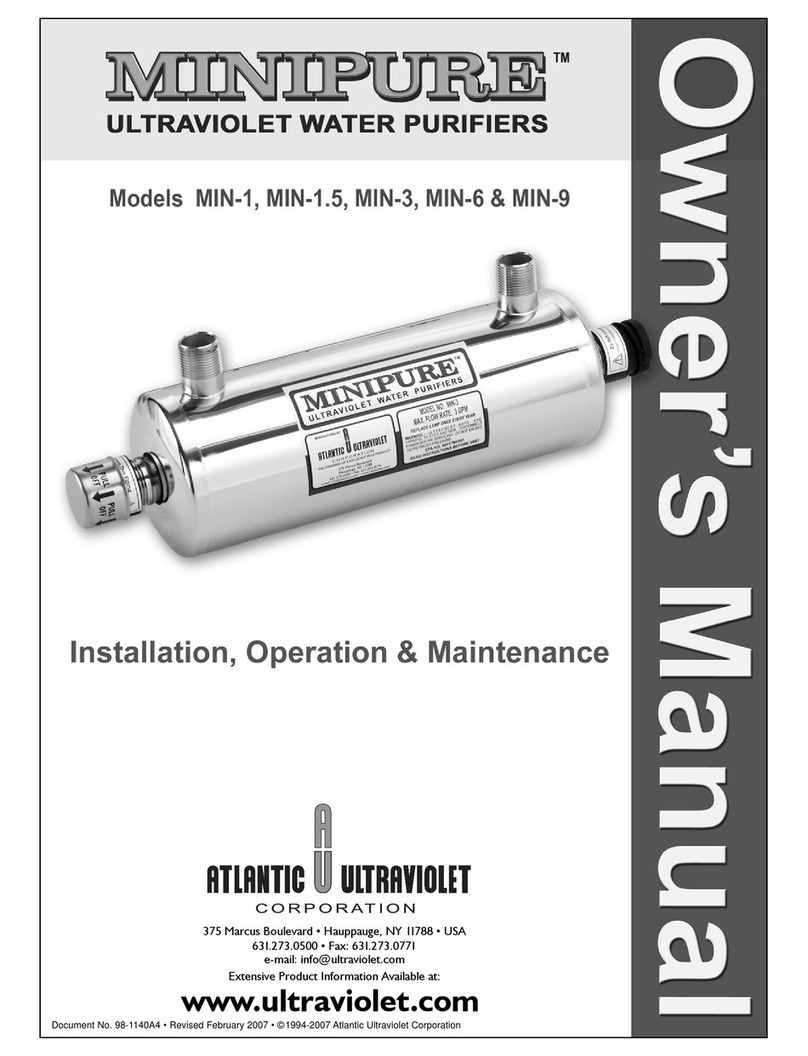
Atlantic Ultraviolet
Atlantic Ultraviolet MIN-1 owner's manual

Steinbach
Steinbach Speedclean Comfort 50 ORIGINAL OWNER'S MANUAL
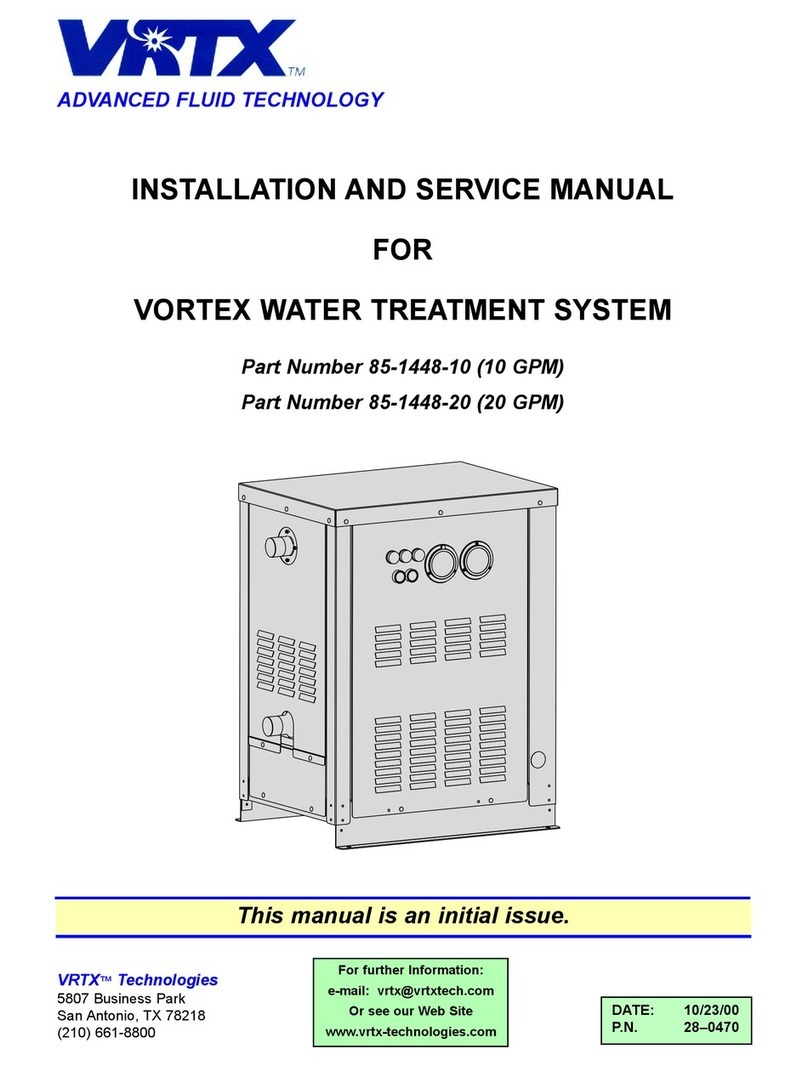
Vortex
Vortex 85-1448-10 (10 GPM) Installation and service manual

Wellness
Wellness Wellness Shower Usage & Care Guide
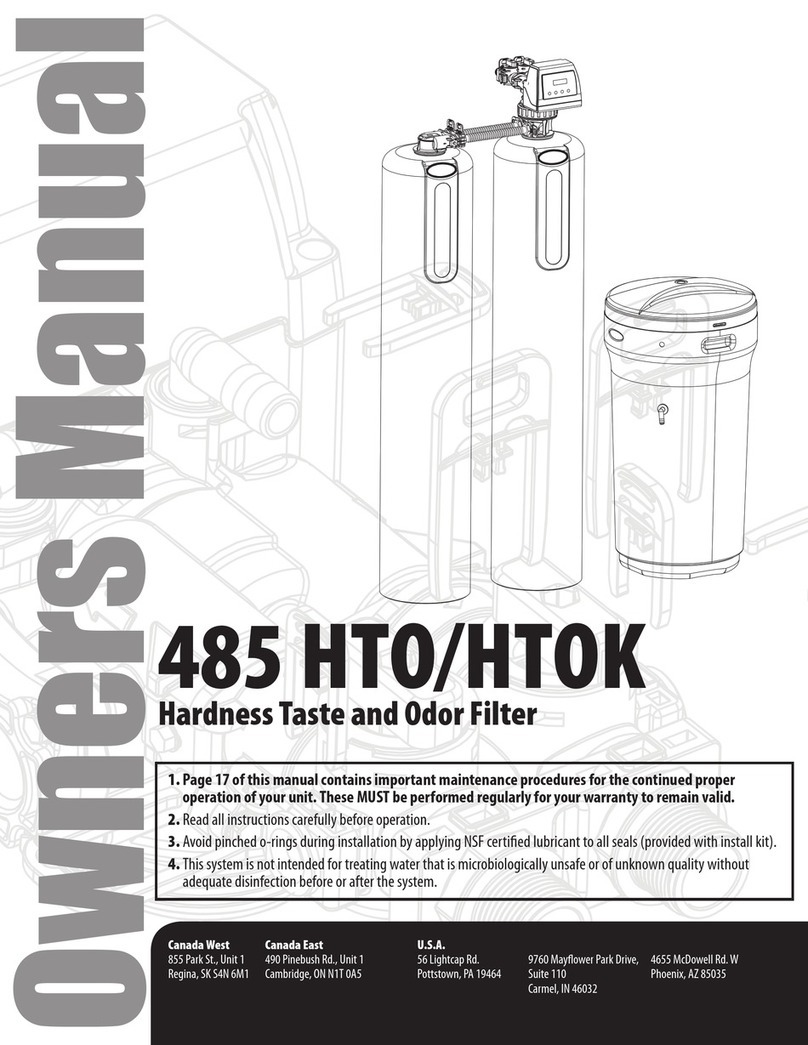
Nowo
Nowo 485 HTO/K Series owner's manual
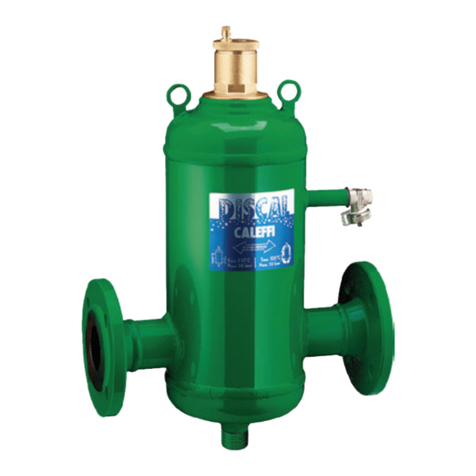
CALEFFI
CALEFFI DISCAL NA551 Series Installation, commissioning and servicing instructions
